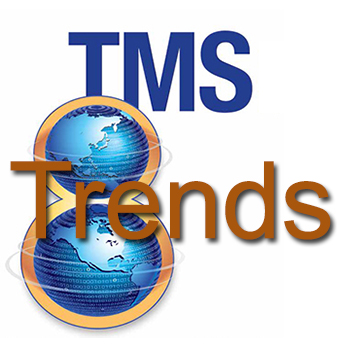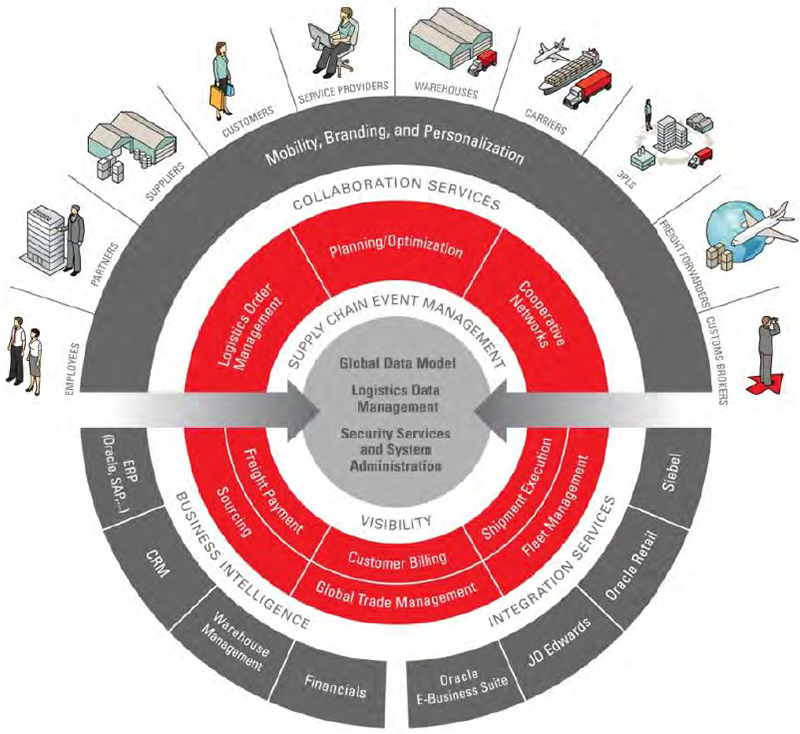Characterized as one of the fastest growing enterprise application markets by ARC Advisory Group, the transportation management systems (TMS) sector has been growing at a double-digit rate over the last couple of years—and isn’t showing signs of letting up anytime soon.
A technology solution that helps companies efficiently, reliably, and cost effectively move freight from origin to destination, TMS includes both planning and execution solutions (systems for freight moves involving carriers) and fleet management solutions (for freight moves involving transportation assets owned by the company). Shippers are embracing both sides of TMS, according to ARC analysts, thanks mainly to the strong ROI offered up by such solutions.
“The simple, bottom line is that TMS can save companies money by lowering their freight spend,” says Steve Banker, ARC’s service director of supply chain management.
Banker points to an ARC survey as proof of that point, adding that over 40 percent of respondents felt that if they were forced to give up their TMS and go back to more manual processes for planning and execution, their total freight costs would increase by 5 percent to 10 percent. “In fact, 23 percent felt their total freight costs under the control of the TMS would increase by over 10 percent if they were to stop using it,” he adds.
For logistics professionals charged with the movement of freight, TMS can also help create transportation efficiencies, provide real-time dashboards, enable better decision making, and handle myriad other tasks that can’t be adequately addressed with phones, faxes, and spreadsheets.
Over the next few pages, we’ll take a closer look at eight key trends that supply chain software analysts say are shaping the TMS landscape—and pushing even more logistics professionals to put it to work.
1. The Omni-Channel Retailer Needs Support
No longer able to compartmentalize their various business channels, today’s retailers need help running seamless, omni-channel systems that incorporate bricks-and-mortar, online, mobile, catalogue, and other sales channels under a single umbrella.
Transportation plays a key role in this streamlining, which means TMS also plays an important part in creating the omni-channel environment. Banker says that the trend is applicable mainly on the fleet management side of TMS right now. “As the omni-channel retailers mature,” says Banker, “their logistics organizations are going to be looking for fleet management solutions that have special capabilities in the area of last-mile delivery from their stores.”
2. Transportation Management is Going Global
As TMS use has grown, the application’s global footprint has increased exponentially. “A software market that originated in the U.S., and that has historically had a sort of ‘trucking flair’ to it,” says Banker, “is now growing and more effectively handling modes like ocean and air.” As a result of these growing capabilities, TMS is gaining ground in European and Latin American markets. “What we’re seeing now in terms of global TMS growth will continue to radiate out and encompass more markets,” Banker adds.
3. Systems Can Handle Tactical Planning
Historically, a TMS is a great tool for determining the best way to ship, say, 2,000 orders over a 24-hour period. But larger shippers want more than just a deterministic view of how to ship those orders—they want to also be able to do effective forward-looking planning.
“By adding tactical planning to the mix, shippers can figure out the impact of fuel charges, carriers going out of business, or how to manage around a strike at a major port,” says Dwight Klappich, research vice president for Gartner, Inc. He says large TMS providers like Oracle and JDA have already started offering such capabilities within their platforms.
“Smaller shippers may not have the wherewithal to do this type of tactical planning,” says Klappich, “but for the firm that spends $100 million or more on transportation in a year, it’s just going to become more and more important.”
4. Vendors Add Freight Forecasting to the Mix
Up until now, most attempts to marry product-forecasting systems with transportation have failed. That’s changing, says Klappich, as vendors like Terra Technology produce solutions that help companies manage market volatility by using demand sensing, inventory optimization, and transportation forecasting.
“Terra is really the only vendor that’s doing this,” says Klappich, who sees real potential in the combination of freight forecasting with transportation management. “However, I think we’re going to see more innovation in this area going forward.”
5. Embedded Analytics are in High Demand
Bombarded daily by terabytes of digital information, shippers need a way to wade through the data, select its most useful components, and then use that information to make the best possible transportation decisions.
Klappich says TMS packages that effectively embed analytics—help to discover rich and meaningful patterns within the data—will remain in high demand. A TMS that includes carrier score-carding, for example, should be able to cross-pollinate that rating information for application during the vendor-selection process. “Embedded analytics allow shippers to come up with useful key performance indicators and actually consume and utilize the data as they go about their other activities,” says Klappich.
6. Big Data Sets Get More Manageable
From his vantage point as principal of supply chain consultancy Chainalytics, Matthew Harding keeps a close eye on what’s going on in the TMS sector. One of the trends Harding has picked up on recently involves the Big Data sets being generated by TMS.
According to Harding, these large, messy sets of data tend to get in the way of good execution and planning due to the fact that shippers simply haven’t figured a way to effectively wrap their arms around them yet. “There is embedded data or intelligence in that data, and it is not structured consistently against the objectives that the shipper may be searching for,” says Harding.
To make that unstructured data retrievable and useable, shippers must first clean it, harmonize it (identifying commonalities among the data that warrant them being combined, or harmonized, into a single data component), and standardize it. “We’re seeing a real opportunity to use the structured data to improve the visualization of the data itself and how it’s being used in the transportation segment,” says Harding.
7. Shippers Want Systems that Help them Utilize Backhauls
Retailers and grocers are particularly interested in not hauling empty trucks back to their DCs after the goods have been delivered, says Rishi Raina, principal of North American supply chain technologies at Capgemini. “They want to be able to utilize their networks more efficiently, and they’re looking to their TMSs for help in this area,” Raina adds.
And while some of the more established vendors have historically incorporated backhaul capabilities into their platforms, the challenge lies in tying carrier contracts, agreements, and negotiations into the equation. “If a shipper can get through those hurdles, there will be a lot of savings to be unlocked on the backend,” says Raina.
8. Planning and Execution Could Get a Place at the TMS Table
Right now, TMS vendors are looking for ways to better tie planning and execution systems into their platforms. “Traditionally, those systems have operated within their own silos—and with no tie-in to transportation,” Raina points out.
He says large TMS providers like Oracle and JDA are beginning to integrate those processes in a way that will allow shippers to more efficiently monitor manufacturing and production cycles as part of the distribution process. “There has to be a better way of managing the flow and synchronization among transportation, planning, and execution,” says Raina. “In fact, there’s a huge amount of interest in this from the shippers’ perspective right now, but none of the TMS platforms are fully there yet.”
Trend Tracking into 2014
Other trends unfolding in the TMS space include the continued interest in cloud-based solutions that require low upfront fees and minimal IT infrastructure; an ongoing push to upgrade older systems and replace them with state-of-the-art platforms; and the need for holistic TMS that can do more than just track transportation movement and spend. Raina adds that the latter will likely help drive TMS growth and innovation well into 2014.
Third-party logistics providers are especially interested, for example, in adopting end-to-end, holistic TMS that can handle optimization, dedicated fleet management tasks such as driver invoicing and payroll, and traditional brokerage operations.
“There hasn’t been a strong case for a TMS that can do all three of these things well,” adds Raina, “so it’s an area that software vendors are examining more closely based on the market demand that we’re seeing for it.”
About the Author
Follow Robotics 24/7 on Linkedin
Article topics
Email Sign Up

















